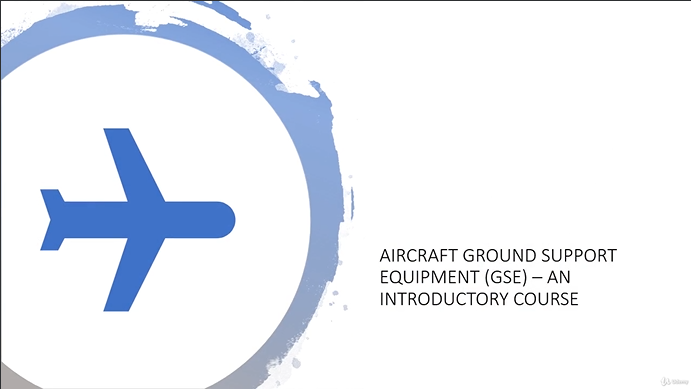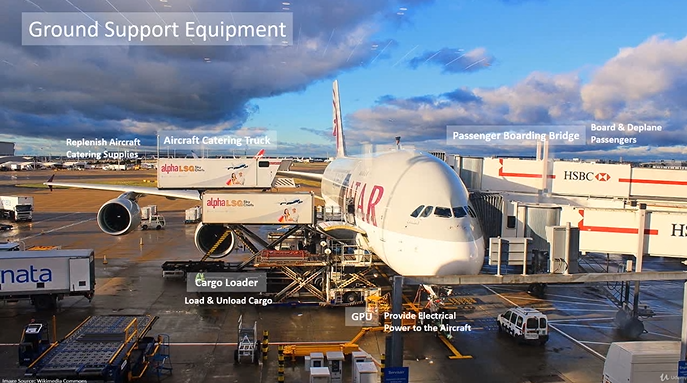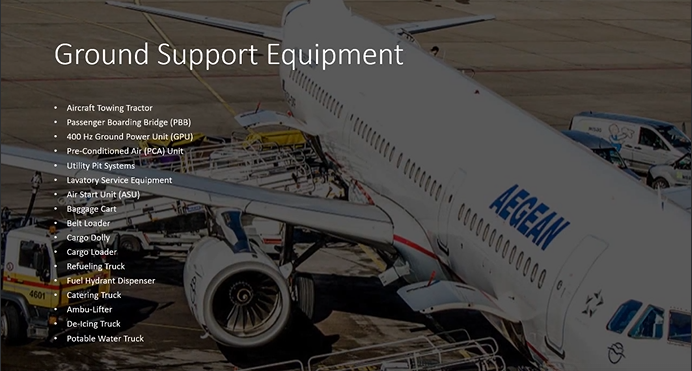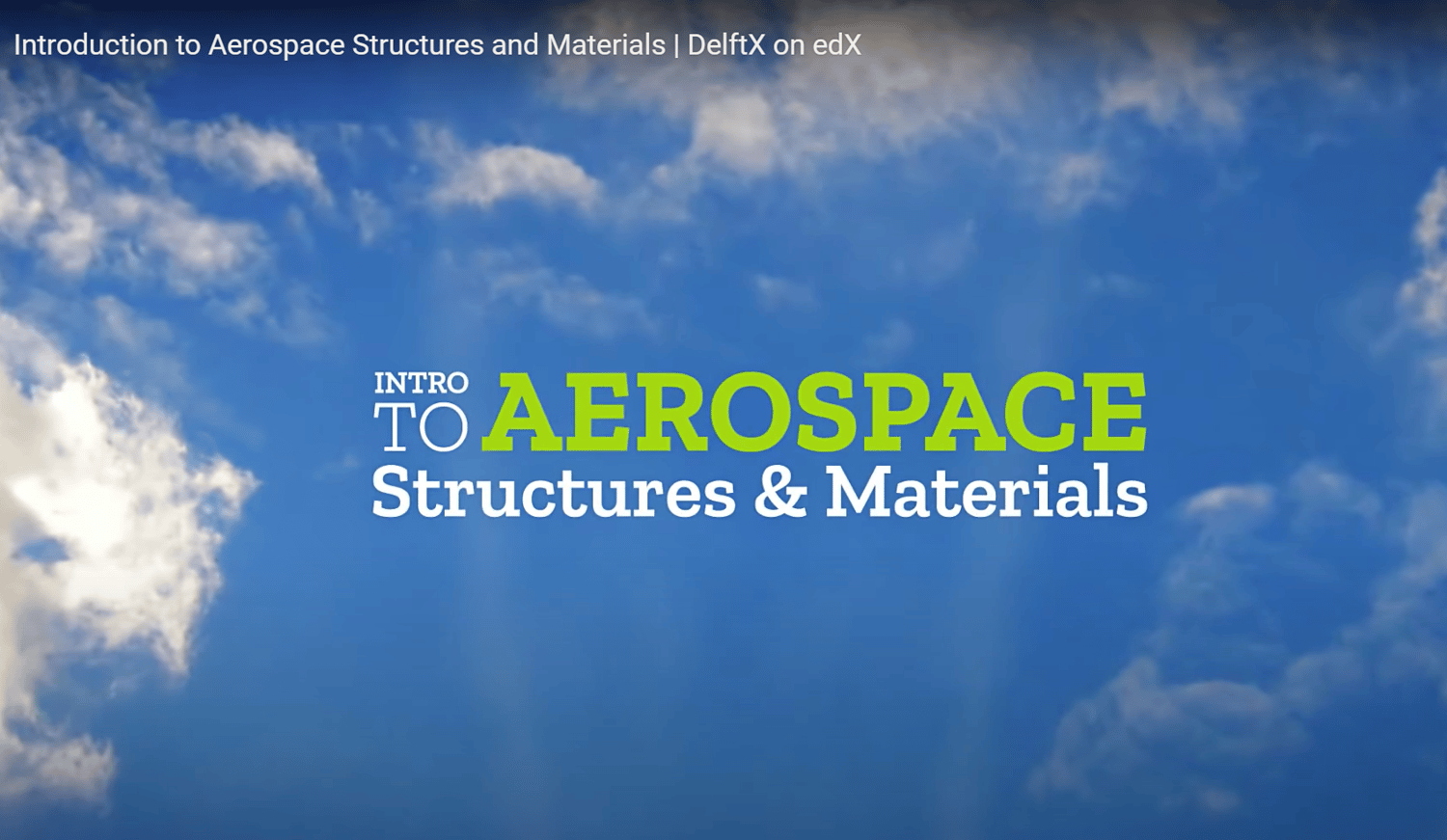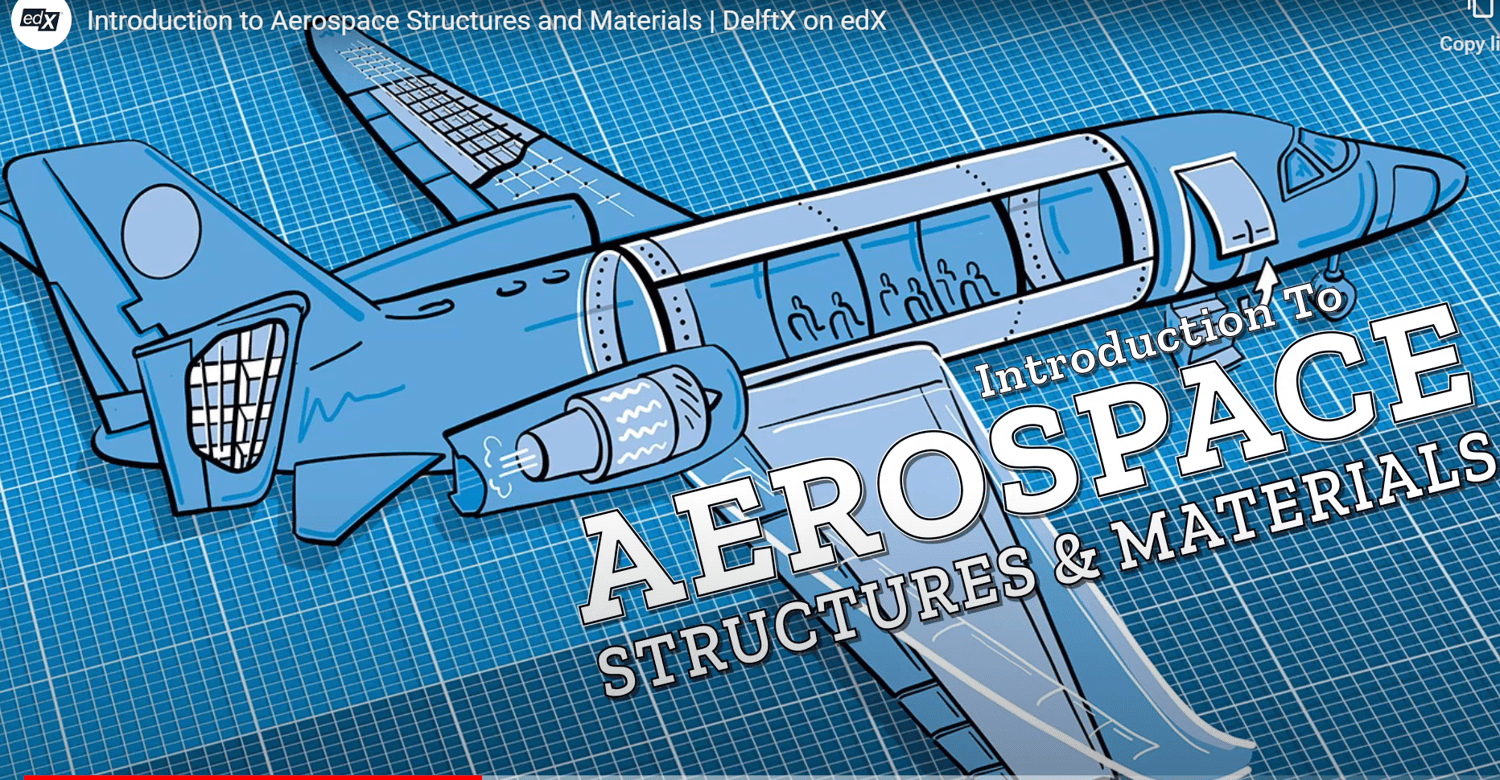Aircraft Ground Support Equipment Course $9 + $13.99 Original Price$64.99 Discount 78% off 2 Days left at this price + 1 GIFT COURSE - Introduction to Aerospace Structures and Materials
Aviation: Aircraft Ground Support Equipment
Learn about nearly 20 different types of ground support equipment and operations in aircraft ground handling.
What you'll learn
- Nearly 20 different types of Aircraft Ground Support Equipment used world wide.
- Role each equipment plays in aircraft ground operations and the particular nature of ground support provided by each equipment.
- Basic understanding of how each equipment works; what are its major components and its different types and configurations.
- How all Ground Support Equipment work together in Ground Handling to service the aircraft.
This course includes:
- 3 hours on-demand video
- 2 articles
- Access on mobile and TV
- Full lifetime access
- Certificate of completion
Requirements
- Some basic school level science knowledge.
- Some prior knowledge of airport and aircraft.
Description
Do you know there are nearly 20 different Ground Handling activities performed on an airplane? and that each of these activities is performed by a specialized machine, vehicle or piece of equipment designed for that very purpose.
An airport gate, aircraft bay or stand, whatever you name it, becomes a very busy place when an aircraft is parked there. Tens of different machines and personnel gather around the aircraft for its servicing to make it ready for the next flight as soon as possible because an aircraft doesn't make profit staying on the ground. It needs to get back in air as soon as possible.
Aircraft Ground Support Equipment (GSE) refers to all these specialized vehicles and machines that are used in Ground Handling Operations/Ramp Operations to service an aircraft in-between flights. They are of many types and perform many different aircraft support operations and aircraft servicing activities to prepare the aircraft for the next flight. This course is designed to explain all of these ground support operations performed by each of these Ground Support Equipment in detail to look at how many of them are there and what role does each equipment play. It explains how each equipment works and its different types and configurations.
This course will not just name the equipment with their descriptions, NO! This course will explain why is this ground support operation there? Why does the aircraft need support in this thing? Why a specialized machine for this purpose? By explaining these intuitive questions, this course will build a good conceptual foundation of ground support operations.
Who this course is for:
- Anyone working or willing to work in aviation sector including Airlines, Ground Handling Agencies (GHAs), Ground Support Equipment Manufacturers, Airport Authorities, Aviation Regulatory Bodies like ICAO, FAA and IATA etc.
- Anyone doing business in aviation industry especially GSE products such as supply and distribution.
- Anyone conducting any sort of research or study on Aircraft Ground Operations.
- Anyone working in the field of Airport Design and Development.
- Airplane and Aviation Enthusiasts.
+GIFT FREE COURSE
Introduction to Aerospace Structures and Materials
Explore the structural and material design of aircraft and spacecraft from the viewpoint of an aerospace engineer.
8 weeks
6–8 hours per week
Self-paced
Progress at your own speed
Free
Optional upgrade available
About this course
How do you design an aircraft or spacecraft? And in doing so, how do you keep the risk of failure minimal while bearing in mind that they will eventually fail?
In this course you will be taken on a journey through the structural and material design of aircraft. You will see and understand how aircraft and spacecraft are manufactured, and learn how safety is enshrined at every stage.
Experts from the Aerospace Structures and Materials Department of Delft University of Technology will help you explore and analyze the mechanical properties of materials; learning about manufacturing techniques, fatigue, loads and stresses, design considerations and more - all the scientific and engineering principles that structural and materials engineers face on a daily basis. By the end of the course, you will have learned to think like they do!
Join us for an exciting learning experience that includes experiments; some of which you can do by yourself at home, online lectures, quizzes, and design assignments.
At a glance
- Institution: DelftX
- Subject: Engineering
- Level: Introductory
- Prerequisites:
- Basic knowledge of Physics (concepts of forces and moments, springs and temperature) and some familiarity with aircraft and spacecraft terminology: (e.g. wing, fuselage, tail plane, rocket, launcher).
- Language: English
- Video Transcript: English
- Associated skills:Experimentation, Spacecraft, Material Design
What you'll learn
- How aerospace structures are designed and why particular choices are made
- Which materials are used and the reasons for using them
- How to explain loads and stresses aerospace structures have to withstand
- How aircraft and spacecraft are manufactured
- The safety philosophies that are used in aerospace structural design and how they affect design choices
- How to create preliminary design solutions for structural design problems
Syllabus
Part 1: Material Properties & the Environment
This part presents the basic concepts of material properties and the phenomena of stress and strain in aircraft or spacecraft at different temperatures and in different environments.
Part 2: Materials and Manufacturing Methods
We introduce the properties and manufacturing methods of typical aerospace materials such as metals, ceramics and composites. We will let you play around and create your own materials and ask you to come up with your first design proposal.
Part 3: Aerospace Structures
This part covers the essential structural elements of aircraft and spacecraft. The assignment involves studying the skeleton of your favorite aircraft or spacecraft to identify why certain structural elements were used by their designers.
Part 4: Loads and Stresses
Covers the loads that act on the different aircraft parts, the paths these loads travel on through a structure, and how this affects design choices when designing wings and fuselages. We look at the consequences of pressurized fuselages and of bending of wing spars and how it impacts the design. At the end of this part, you will face your first dilemma as a designer: how to satisfy all the design requirements even if they appear contradictory.
Part 5: Selection of Materials and Structures
This part looks at the structural performance of aircraft and how to select the appropriate structural and materials solutions for a design problem based on stiffness and strength. The concepts of specific strength and specific modulus will be introduced. We will also take you through the basic steps on how to dimension a spacecraft.
Part 6: Design, Certification, Fatigue and Durability
If you are a fan of those aircraft investigation shows on the television, you will most likely enjoy this module. However, we will also show you that life isn't quite like television, should you still be in any doubt. You will learn how, during the design process, many possibilities for failure are already eliminated, and the underlying philosophies for why. We will also discuss fatigue and damage tolerance, as they are critical if we want to monitor and improve the durability of aircraft and spacecraft.
Part 7: Joining & Manufacturing
In this part we look at how aircraft and spacecraft are assembled, what joining methods are used and why. As your final assignment, you will choose a joining method for your aircraft based on a dilemma we will present you with!
Part 8: Wrap Up
As always, no job is done until the paperwork is done. We ask you to look back at your initial expectations and see how far you have come. We also kindly ask you to give us some feedback on what you liked in the course and which bits could be improved.
More about this course
SHERABLE LICENSE + Graded assignments and exams
($139)
The course materials of this course are Copyright Delft University of Technology and are licensed under a Creative Commons Attribution-NonCommercial-ShareAlike (CC-BY-NC-SA) 4.0 International License.

